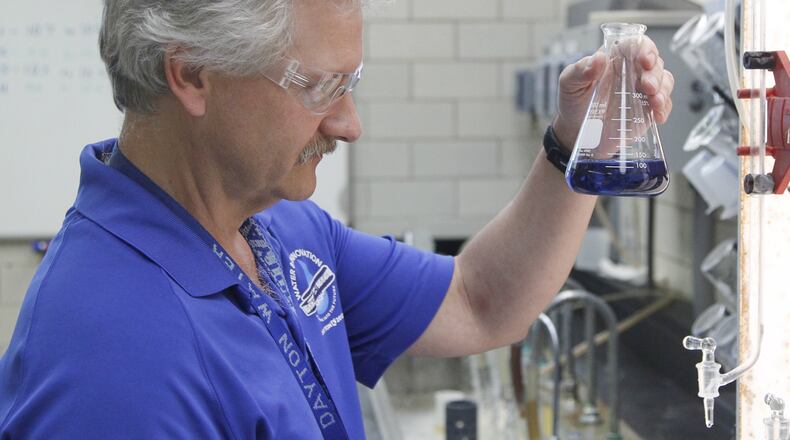RELATED: What you need to know about chemicals in water
The bill would also expedite analysis of the chemicals and provide support and resources to states dealing with them, the office said. The bill also proposes efforts to identify the health effects of cyanotoxins, the toxin in the algal bloom that shut down Toledo’s water supply in 2014.
Drinking water safety is one of the topics examined by the Dayton Daily News Path Forward project, which digs into solutions for the most pressing issues facing the community.
For several years, Wright-Patt officials have faced concerns about PFAS, formally known as per- and polyfluoroalkyl substances. Last year, the city of Dayton found PFAS in the groundwater near the McFadden Avenue firefighter training center.
The city of Dayton runs the region’s largest water system, which includes several other Montgomery County communities.
Existing law requires the Environmental Protection Agency to identify and analyze emerging contaminants, but Portman’s office said actions to monitor and treat contaminants is often delayed due to “the rigorous yet lengthy nature of EPA’s multi-step review process.”
“This legislation will help the federal government more efficiently and effectively analyze the impacts of, and respond to, emerging contaminants through greater coordination among federal agencies, and will provide states with the resources they need to monitor, test, and respond to potential risks posed by emerging contaminants,” Portman said in a statement.
MORE: Nearly $1M to fix water line behind largest outage in Dayton’s history
Activists like Bill Walker said the encroachment of PFAS in the water is “rooted in the failure of federal chemical regulation.”
Walker, vice president of the Environmental Working Group, said PFAS presents “the biggest drinking water contamination crisis in the country right now and certainly for quite some time.”
“We still believe this is basically the tip of the toxic iceberg,” Walker said.
The Dayton Daily News earlier this year reported Dayton and Wright-Patt are working to keep the chemicals out of regional drinking water, but progress is slow because federal agencies have not set safety levels for some chemicals or funded clean-up efforts of groundwater contamination.
The bill would direct the EPA to give support and technical assistance to communities that have detected emerging contaminants in their water supply. It additionally would establish and maintain a database of resources to assist states and water utilities with testing for contaminants. The bill also would direct certain federal agencies to create inter-agency working groups to coordinate the federal response and research strategy.
Read more coverage:
» Progress slow in addressing chemicals in local water
» ‘Nearly catastrophic’ break a glimpse of vulnerabilities to area’s water
News Center 7 Reporter Kate Bartley contributed reporting.
About The Path Forward
The Dayton Daily News has assembled a team to write about solutions to some of the region’s most pressing problems, including protecting our drinking water. Find our coverage at DaytonDailyNews.com/PathForward.
About the Author
